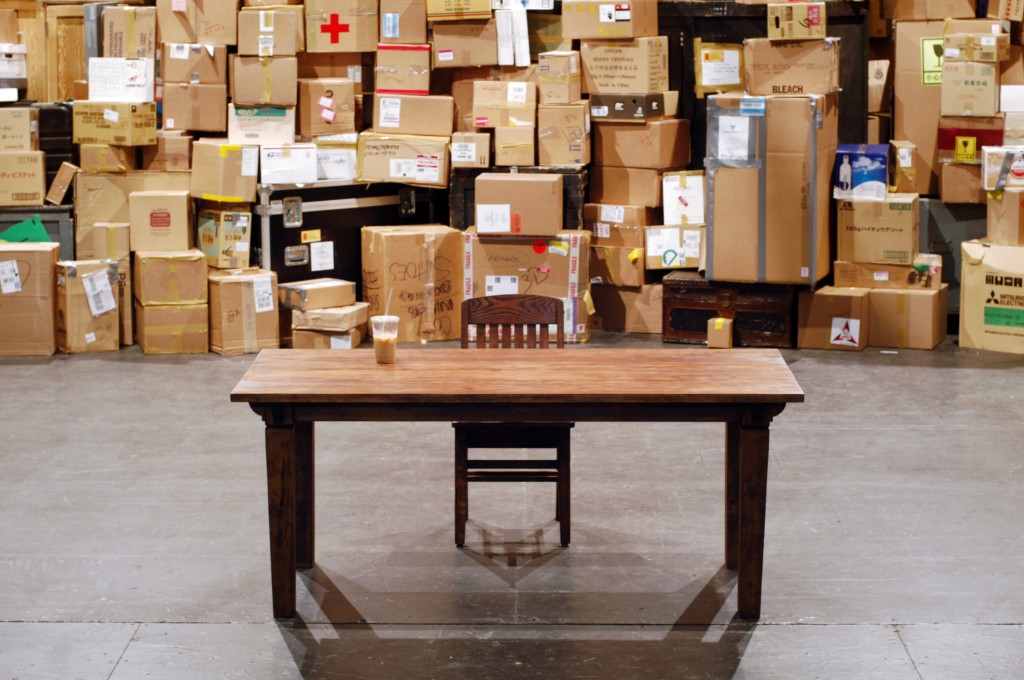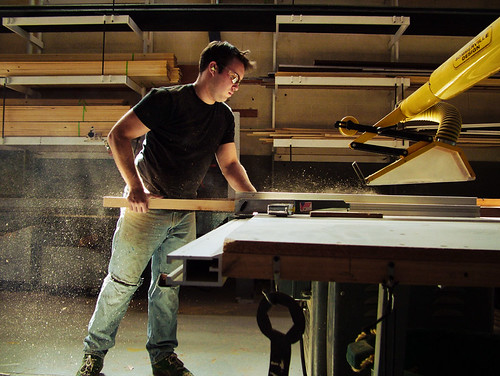In the previous post, I spoke about the wooden table we were building for The Last Cargo Cult.

Jay Duckworth started off with a coat of darker stain to catch the raised grain and really accentuate it. He went over the whole thing again with a lighter shade. After it appeared on stage during tech rehearsal, Peter Ksander, the designer, wanted to see it a bit darker and richer. I added a light coat of Red Mahagony stain, which got it where it wanted to go; we sealed it with a thin coat of water-based polyurethane. You may have noticed some boxes behind the table, which were the other major props challenge on this show. Below is a wider shot to show the full tableau.

Meredith Ries, who helped us out with a lot of the box work, has a more extensive write-up on the cardboard boxes at her own blog. The pile is about sixteen feet high at its tallest point.
The Last Cargo Cult is currently in previews and opens this Monday, December 7th.

